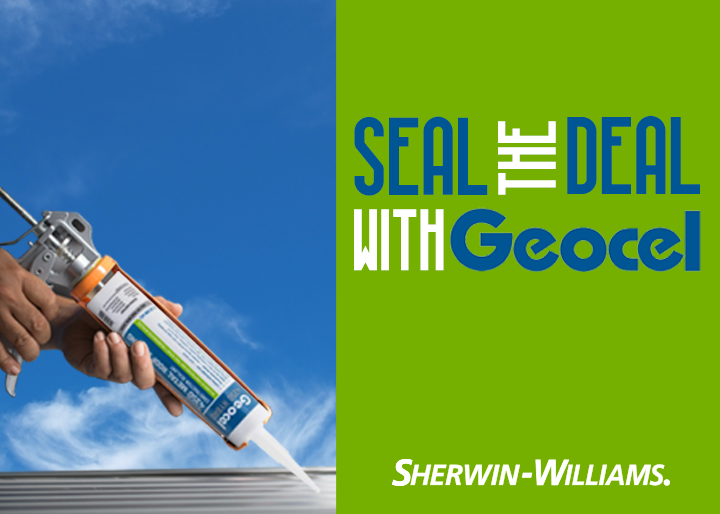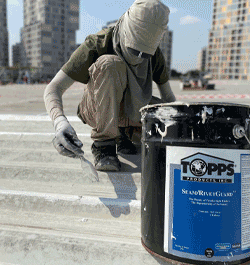UP TO THE MINUTE
Rooftop chemistry explained
October 12, 2025 at 9:00 a.m.By Jesse Sanchez.
Roofing expert breaks down the science behind two of the industry's most prominent coatings.
In this episode of CoatingsTalk, Megan Ellsworth sat down with roofing veteran Cameron Webb from MuleHide to tackle the topic of silicone versus acrylic coatings. With more than two decades in the industry and a territory spanning Arizona, Nevada and Southern California, Cameron dug into the chemical foundations that set these two products apart.
“Silicones are made primarily from a siloxane polymer,” Cameron said. “One of the differentiating factors with silicone is that it's inorganic in nature. That makes silicone highly resistant to UV degradation and weathering.” That key difference, Cameron explained, gives silicone an edge in environments with intense sun exposure or frequent rain. “Silicones are naturally hydrophobic,” he added. “They repel water and they are a moisture cure product, which is a lot different than an acrylic-based product.”
While silicone may have the edge in durability and moisture resistance, acrylic coatings aren’t to be dismissed. Made from acrylate polymers, acrylics are organic and water-based. According to Cameron, this makes them more prone to UV degradation and swelling when exposed to water. But their advantages lie in application ease and aesthetics. “Acrylics dry a little harder than silicones do,” he noted, “By nature, silicone can tend to pick up dirt a lot more than an acrylic can. Acrylics dry a little harder than silicones do, so acrylics are a lot more resistant to dirt pickup.”
As the discussion shifted from performance to environmental considerations, Cameron drew attention to a key difference in chemical emissions. “Very low amounts of VOCs are in a silicone material,” he said. “Most silicones are somewhere less than 50 [grams per liter] and acrylics are less than 20.” VOCs, are a major concern in construction due to their impact on air quality and worker safety. While both coatings perform well in this regard, Cameron noted that acrylics tend to be the greener option.
While both products serve the same broad purpose, protecting and extending the life of a roof, the choice between them is far from simple. Cameron noted that decision-making should consider more than just product specs. Factors like climate, budget, slope, existing substrates and warranty needs all come into play.
Listen to the podcast or Watch the webinar to hear Cameron break down even more technical nuances and decide for yourself which coating is best for your next roofing project!
Learn more about MuleHide Products in their Coffee Shops Directory or visit www.mulehide.com.

About Jesse
Jesse is a writer for The Coffee Shops. When he is not writing and learning about the roofing industry, he can be found powerlifting, playing saxophone or reading a good book.























Comments
Leave a Reply
Have an account? Login to leave a comment!
Sign In